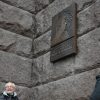Since the start of the pandemic, the most terrifying task in healthcare was thought to be when a doctor put a breathing tube down the trachea of a critically ill Covid patient.
khn logo
Those performing such “aerosol-generating” procedures, often in an intensive care unit, got the best protective gear even if there wasn’t enough to go around, per Centers for Disease Control and Prevention guidelines. And for anyone else working with Covid patients, until a month ago, a surgical mask was considered sufficient.
A new wave of research now shows that several of those procedures were not the most hazardous. Recent studies have determined that a basic cough produces about 20 times more particles than intubation.
Other new studies show that patients with Covid, simply by talking or breathing, even in a well-ventilated room, could make workers sick in the CDC-sanctioned surgical masks. The studies suggest that the highest overall risk of infection was among the frontline workers – many of them workers of color – who spent the most time with patients earlier in their illnesses and in sub-par protective gear, not those working in the Covid ICU.
“The whole thing is upside-down the way it is currently framed,” said Dr Michael Klompas, a Harvard Medical School associate professor who called the phrase “aerosol-generating procedure” a “misnomer” in a recent paper in the Journal of the American Medical Association.
At least 400 US healthcare workers have died of Covid despite vaccine rollout
Read more
“It’s a huge mistake,” he said.
The growing body of studies showing aerosol spread of Covid-19 during choir practice, on a bus, in a restaurant and at gyms have caught the eye of the public and led to widespread interest in better masks and ventilation.
Yet the topic has been highly controversial within the healthcare industry. For over a year, international and US nurse union leaders have called for health workers caring for possible or confirmed Covid patients to have the highest level of protection, including N95 masks.
But many experts, supported by national and California hospital associations, have long insisted that N95s be reserved for those performing aerosol-generating procedures, saying other frontline workers can safely care for Covid patients while wearing less protective surgical masks.
The guidelines still say a worker would not be considered “exposed” to Covid-19 after caring for a sick Covid patient while wearing a surgical mask. Yet in recent months, Klompas and researchers in Israel have documented cases where workers using surgical masks and face shields became sick with Covid after providing routine patient care.
The CDC said in an email that N95 “respirators have remained preferred over face masks when caring for patients or residents with suspected or confirmed” Covid, “but unfortunately, respirators have not always been available to healthcare personnel due to supply shortages”.
Other new research by Harvard and Tulane scientists found that so-called super-spreaders of Covid – the 20% of people who emit 80% of the tiny particles – tend to be obese or older, a population more likely to live in elder care or be hospitalized.
When highly infectious, such patients emit three times more tiny aerosol particles (about a billion a day) than younger or non-obese people. An infected super-spreader who is simply breathing can pose as much or more risk to health workers as a coughing patient, said David Edwards, a Harvard faculty associate in bioengineering and an author of the study.
The study clarifies the grave risks faced by nursing home workers, of whom more than 546,000 have contracted Covid and 1,590 have died, according to reports nursing homes filed to the Centers for Medicare and Medicaid since mid-May.
Taken together, the research suggests that healthcare workplace exposure was “much bigger” than what the CDC defined when it prioritized protecting those doing “aerosol-generating” procedures, said Dr Donald Milton, who reviewed the studies but was not involved in any of them.
“The upshot is that it’s inhalation” of tiny airborne particles that leads to infection, said Milton, a professor at the University of Maryland School of Public Health who studies how respiratory viruses are spread, “which means loose-fitting surgical masks are not sufficient.”
On 10 February, the CDC updated its guidance to healthcare workers, deleting a suggestion that wearing a surgical mask while caring for Covid patients was acceptable and urging workers to wear an N95 or a “well-fitting face mask”, which could include a snug cloth mask over a looser surgical mask.
Yet the update came after nearly 3,500 US healthcare workers had already died of Covid, as documented by the Guardian/KHN in the Lost on the Frontline project.
The project is more comprehensive than any US government tally of health worker fatalities. Current CDC data shows 1,391 healthcare worker deaths, which is 200 fewer than the total staff Covid deaths nursing homes have reported to the US Centers for Medicare and Medicaid.
More than half of the deceased workers whose occupation was known were nurses or in healthcare support roles. Such staffers often have the most extensive patient contact, tending to their IVs and turning them in hospital beds; brushing their hair and sponge-bathing them in nursing homes. Many of them – two in three – were workers of color.
Two anesthetists in the UK – doctors who perform intubations in the ICU – saw data showing that non-ICU workers were dying at outsize rates and began to question the notion that “aerosol-generating” procedures were the riskiest.
Dr Tim Cook, an anesthetist with the Royal United Hospitals Bath, said the guidelines singling out those procedures were based on research from the first Sars outbreak in 2003. A widely cited 2012 study warned that those earlier studies were “very low” quality and said there was a “significant research gap” that needed to be filled.
But the research never took place before Covid-19 emerged, Cook said, and key differences emerged between Sars and Covid-19. In the first Sars outbreak, patients were most contagious at the moment they arrived at a hospital needing intubation. Yet studies of Covid patients in early summer began to show that peak contagion occurred days earlier.
Cook and his colleagues discovered in October that the dreaded practice of intubation emitted about 20 times fewer aerosols than a cough, said Dr Jules Brown, a UK anesthetist and another author of the study. Extubation, also considered an “aerosol-generating” procedure, generated slightly more aerosols but only because patients sometimes cough when the tube is removed.
Since then, researchers in Scotland and Australia have validated those findings in a paper pre-published on 10 February, showing that two other aerosol-generating procedures were not as hazardous as talking, heavy breathing or coughing.
Brown said initial supply shortages of PPE led to rationing and steered the best respiratory protection to anesthetists and intensivists like himself. Now that it is known that emergency room and nursing home workers are also at extreme risk, he said, he can’t understand why the old guidelines largely stand.
“It was all a big house of cards,” he said. “The foundation was shaky and in my mind it’s all fallen down.”
Asked about the research, a CDC spokesperson said via email: “We are encouraged by the publication of new studies aiming to address this issue and better identify which procedures in healthcare settings may be aerosol generating. As studies accumulate and findings are replicated, CDC will update its list of which procedures are considered [aerosol-generating procedures].”
Cook also found that doctors who perform intubations and work in the ICU were at lower risk than those who worked on general medical floors and encountered patients at earlier stages of the disease.
In Israel, doctors at a children’s hospital documented viral spread from the mother of a three-year-old patient to six staff members, although everyone was masked and distanced. The mother was pre-symptomatic and the authors said in the 27 January study that the case was possible “evidence of airborne transmission”.
Klompas, of Harvard, made a similar finding after he led an in-depth investigation into a September outbreak among patients and staff at Brigham and Women’s hospital in Boston.
There, a patient who tested negative for Covid two days in a row wound up developing the virus and infecting numerous staff members and patients. Among them were two patient care technicians who treated the patient while wearing surgical masks and face shields. Klompas and his team used genome sequencing to connect the sick workers and patients to the same outbreak.
CDC guidelines do not consider caring for a Covid patient in a surgical mask to be a source of “exposure”, so but for the in-depth study, the technicians’ cases and others might have been dismissed as not work-related.
The guidelines’ heavy focus on the hazards of “aerosol-generating” procedures has meant that hospital administrators assumed that those in the ICU got sick at work and those working elsewhere were exposed in the community, said Tyler Kissinger, an organizer with the National Union of Healthcare Workers in northern California.
“What plays out there is this disparity in whose exposures get taken seriously,” he said. “A phlebotomist or environmental services worker or nursing assistant who had patient contact – just wearing a surgical mask and not an N95 – weren’t being treated as having been exposed. They had to keep coming to work.”
-
Samantha Young, a California politics correspondent, contributed to this report
-
KHN (Kaiser Health News) is a national newsroom that produces in-depth journalism about health issues. Together with Policy Analysis and Polling, KHN is one of the three major operating programs at KFF (Kaiser Family Foundation). KFF is an endowed non-profit organization providing information on health issues to the nation






















































Свежие комментарии